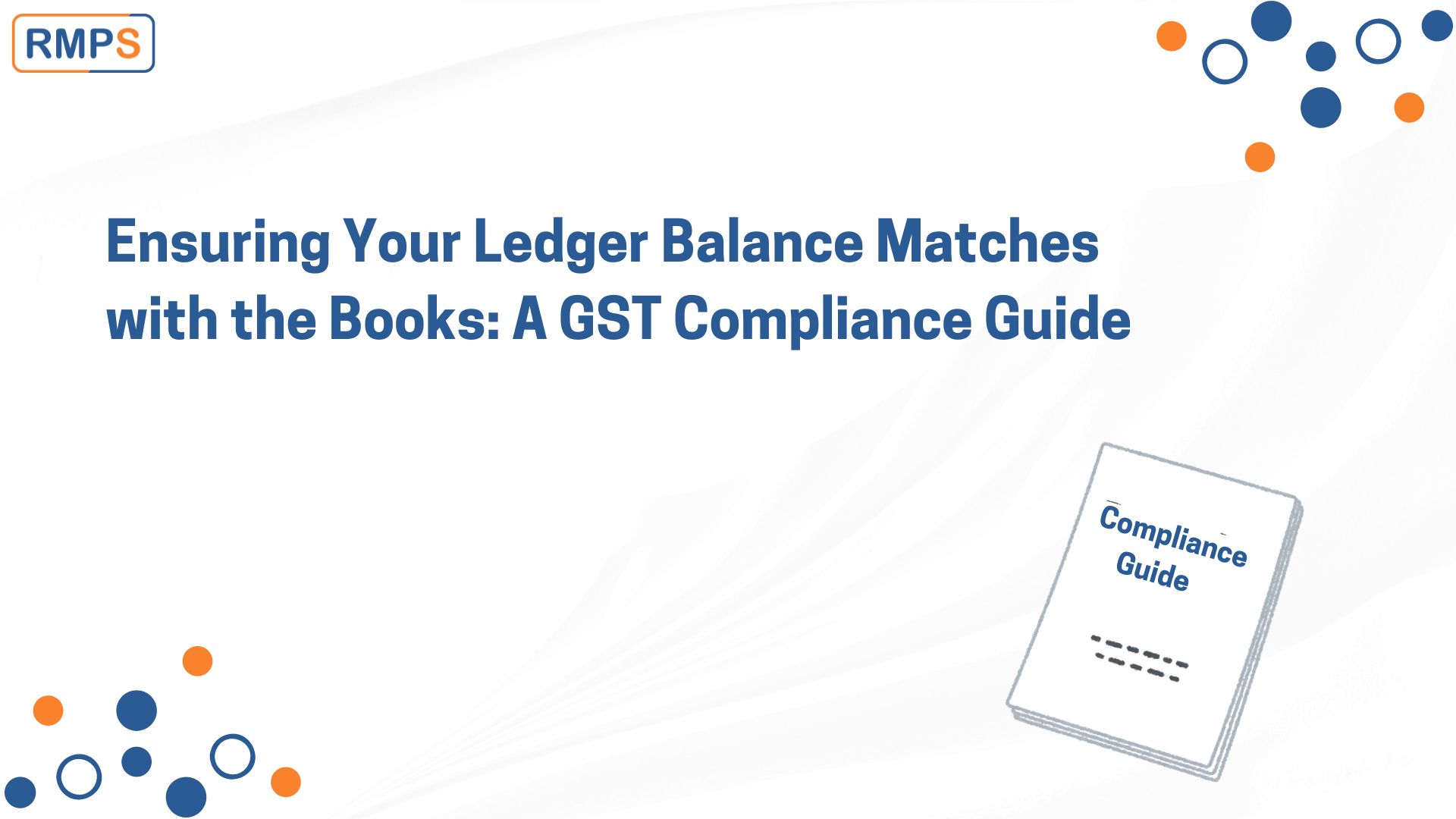
Keeping the ledger balance in sync with your books of accounts is a fundamental step to maintain GST compliance and avoid any penalties or audits. Here’s a structured process to ensure that your ledger and books reflect accurate financial data, helping you stay on top of your GST filings.
1. Monthly Reconciliation of Ledger and Books
Actionable Step:
At the end of each month, perform a reconciliation process where you compare your ledger with the books of accounts. This includes verifying that all financial transactions—such as sales, purchases, GST input/output, and any tax liabilities—match.
- Cross-check sales recorded in your books against the details in your ledger.
- Ensure that all purchase entries in the books match the ledger entries for purchases.
- Verify that the GST collected and paid aligns with the recorded transactions in both the ledger and books.
Practical Tip:
This should be done at regular intervals (monthly or quarterly) to avoid accumulating discrepancies over time.
2. Review Input Tax Credit (ITC) and GST Ledger
Actionable Step:
Regularly review your Input Tax Credit (ITC) ledger to ensure that it matches the actual credit you’re entitled to claim based on your purchases and GST returns. This is crucial for maintaining proper GST compliance.
- Cross-check your ITC ledger with the purchase invoices to confirm that the ITC is accurately recorded.
- Make sure that the total ITC claimed matches what you are entitled to as per the records in your books.
Practical Tip:
Only claim ITC on purchases where the supplier has filed the correct GST returns. Track this regularly to ensure you’re not claiming ITC incorrectly.
3. Manual Verification of Entries
Actionable Step:
Conduct a manual review of all ledger entries to ensure they reflect accurate amounts and details. Any incorrect amounts or wrongly categorized transactions can result in discrepancies between your ledger and the books.
- Verify that each transaction, whether sales, purchases, or tax payments, has been entered correctly in both the ledger and the books of accounts.
- Check for any missed entries, such as a purchase or sale not recorded in one of the ledgers but reflected in the other.
Practical Tip:
Document any manual changes or corrections to keep a record for future audits and reconciliation reviews.
4. Handling Discrepancies and Adjustments
Actionable Step:
When you identify any discrepancies between the ledger and the books, take immediate steps to resolve them. This could involve making adjustments in the relevant ledger and ensuring the books reflect the accurate financial status.
- For incorrect entries, record an adjusting entry in both the books and the ledger to correct the mistake.
- If there are missing entries, ensure they are entered in both places with proper documentation.
Practical Tip:
Always maintain documentation of the reasons for any adjustments made during reconciliation. This will serve as a reference in case of a tax audit or internal review.
5. GST Filing and Compliance Check
Actionable Step:
Before you file your GST returns (GSTR-1, GSTR-3B, etc.), verify that all the GST-related entries in your ledger align with the details recorded in the books of accounts. This ensures that the GST payable or receivable amounts match what’s being reported to the tax authorities.
- Ensure that the total sales and GST collected, as recorded in your books, match the sales and tax liability reported in your GST returns.
- Double-check the purchase ledger and ITC claims against your GST returns to verify accuracy.
Practical Tip:
Reconcile both the ledgers and books before every GST filing to prevent discrepancies that could lead to tax notices or penalties.
6. Regular Review and Documentation
Actionable Step:
Set up a regular review process where you can document the reconciliation of ledgers and books. Ensure that any adjustments or changes made during the process are properly recorded for future reference.
- Conduct monthly or quarterly reviews to verify that both the ledger and books are in sync.
- Keep detailed notes of any significant adjustments made, as these could be necessary during an audit or future reconciliation.
Practical Tip:
Maintain a log of all reviews and reconciliations performed to ensure a trail of documentation is available for audits or regulatory reviews.
Conclusion
Matching your ledger balance with the books of accounts is a vital step for ensuring GST compliance. By following a structured process of regular reconciliation, reviewing ITC claims, verifying entries, and handling discrepancies quickly, you can ensure that your business remains compliant and avoids costly mistakes. This routine practice will also help in preparing accurate GST returns, reducing the risk of audits and penalties.
LinkedIn Link : RMPS Profile
This article is only a knowledge-sharing initiative and is based on the Relevant Provisions as applicable and as per the information existing at the time of the preparation. In no event, RMPS & Co. or the Author or any other persons be liable for any direct and indirect result from this Article or any inadvertent omission of the provisions, update, etc if any.
Published on: September 26, 2024
